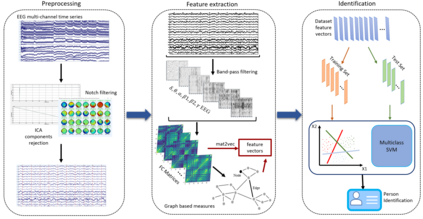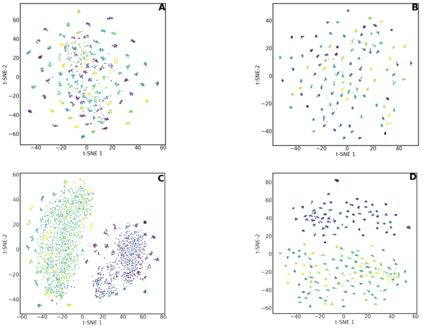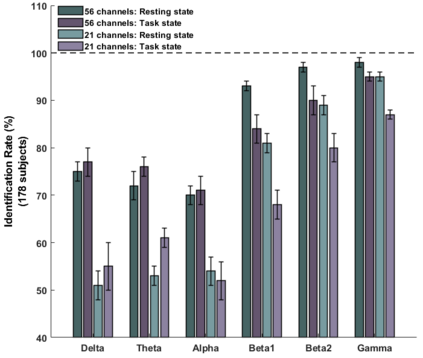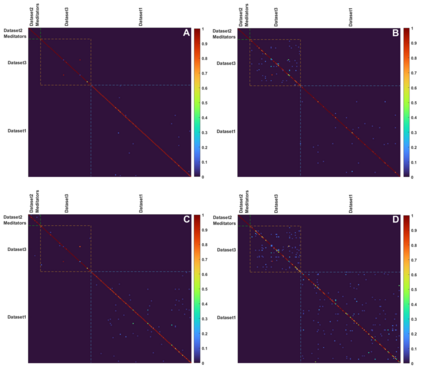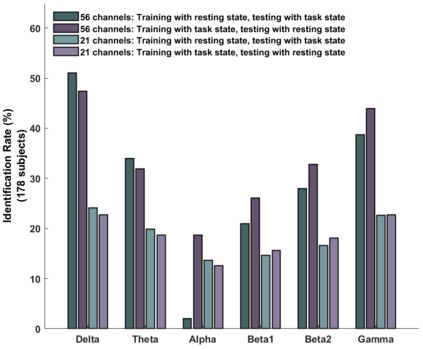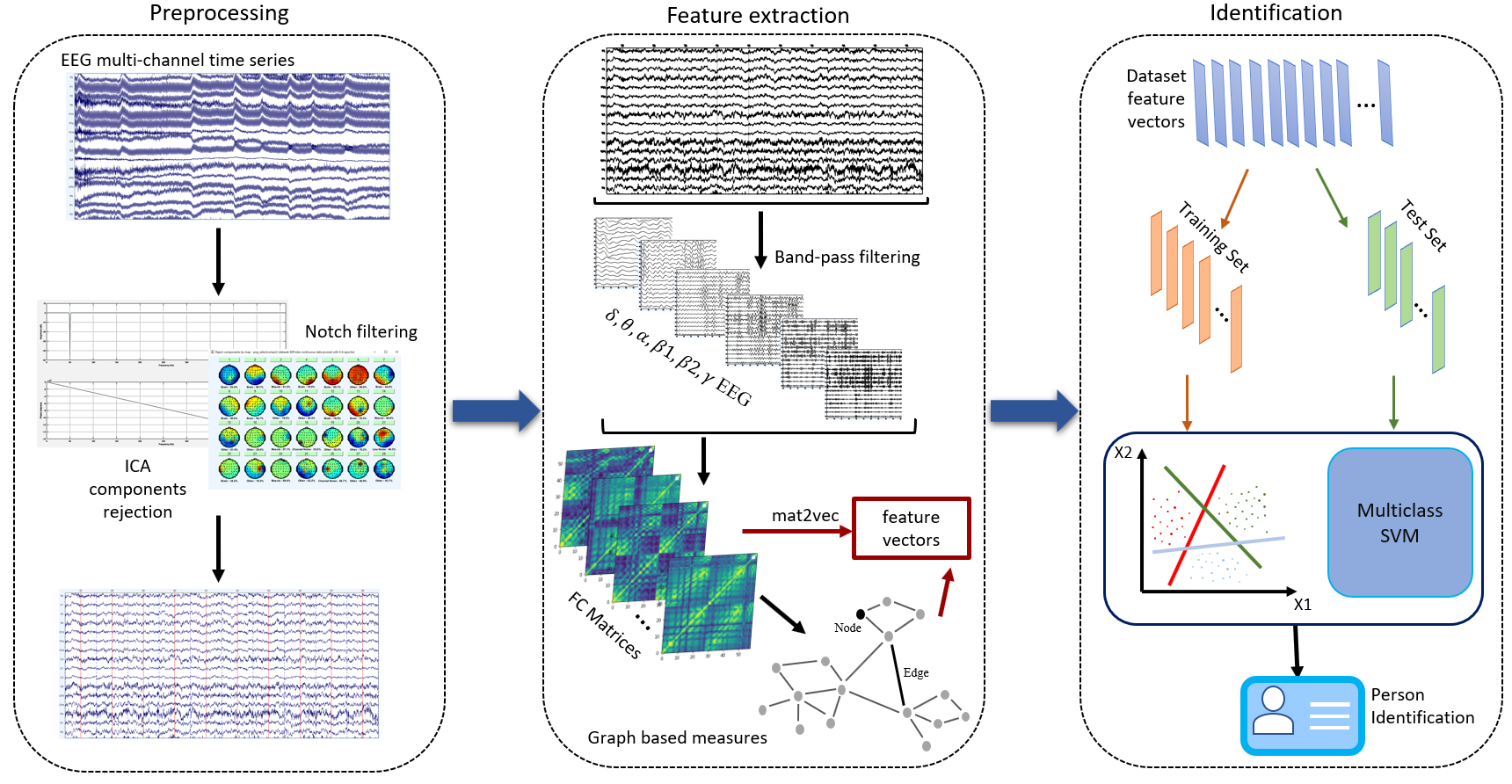This study examines the utility of functional connectivity (FC) and graph-based (GB) measures with a support vector machine classifier for use in electroencephalogram (EEG) based biometrics. Although FC-based features have been used in biometric applications, studies assessing the identification algorithms on heterogeneous and large datasets are scarce. This work investigates the performance of FC and GB metrics on a dataset of 184 subjects formed by pooling three datasets recorded under different protocols and acquisition systems. The results demonstrate the higher discriminatory power of FC than GB metrics. The identification accuracy increases with higher frequency EEG bands, indicating the enhanced uniqueness of the neural signatures in beta and gamma bands. Using all the 56 EEG channels common to the three databases, the best identification accuracy of 97.4% is obtained using phase-locking value (PLV) based measures extracted from the gamma frequency band. Further, we investigate the effect of the length of the analysis epoch to determine the data acquisition time required to obtain satisfactory identification accuracy. When the number of channels is reduced to 21 from 56, there is a marginal reduction of 2.4% only in the identification accuracy using PLV features in the gamma band. Additional experiments have been conducted to study the effect of the cognitive state of the subject and mismatched train/test conditions on the performance of the system.
翻译:这项研究审查了功能连通(FC)和图形(GB)措施的效用,并用支持矢量机分类器对电脑图(EEEG)进行生物鉴别。虽然在生物鉴别应用中使用了基于FC的特征,但利用三个数据库共有的56个EEG频道,利用从伽马频带中提取的阶段锁定值(PLV)测量了97.4%的最佳识别精确度。此外,我们调查了分析时间长度的影响,以确定获得数据所需的时间,以便获得令人满意的识别准确性。当频道数量从56个减少到21个时,在BEEG波段中,识别精确度提高了,表明在β和伽马波带中神经信号的特性更加独特性。利用三个数据库共有的56个EG频道,利用从伽马频带中提取的阶段锁定值(PLV)测量了97.4%的最佳识别精确度。此外,我们调查了分析时间长度的影响,以确定数据获取时间的准确度。当频道数量从56个减少到21个时,只有将伽马带和伽马氏级精确度的精确度测试。

